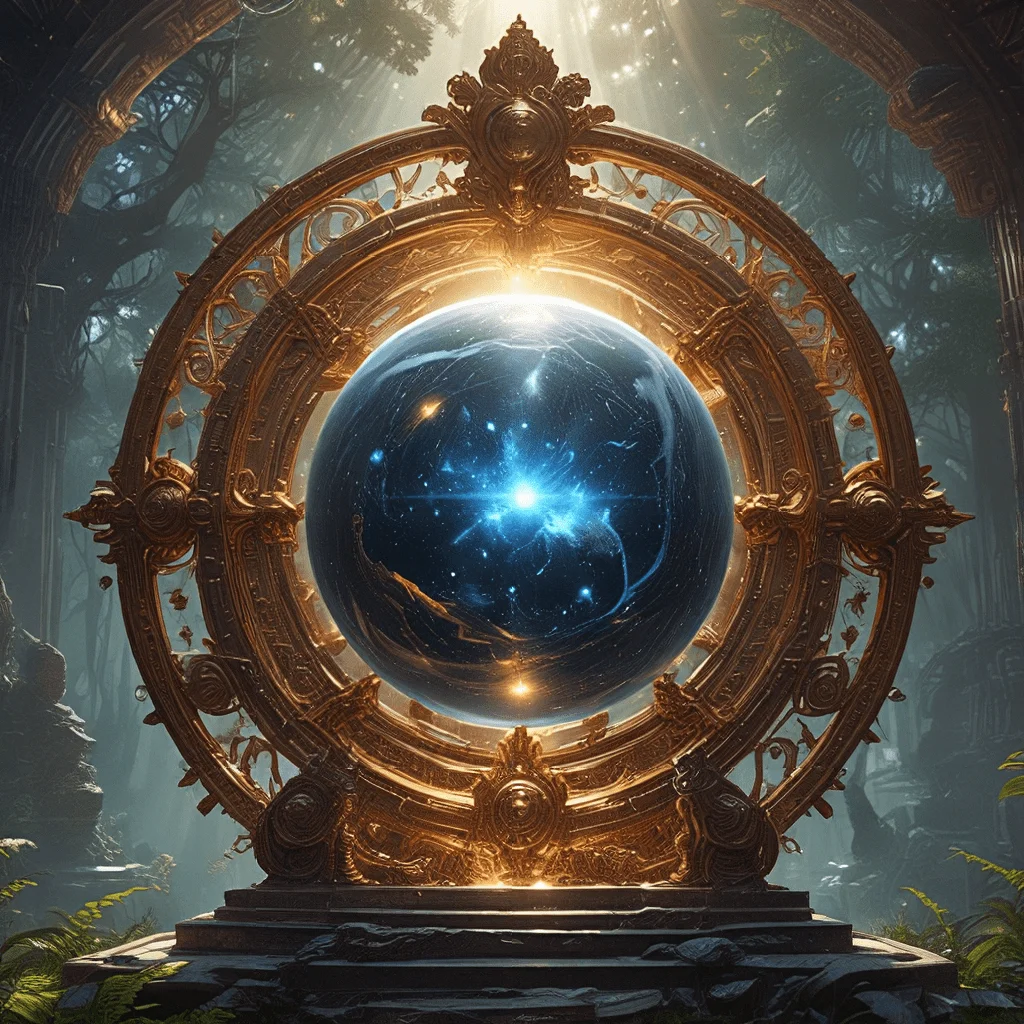The Cosmic Order: Exploring the Search for Balance in the Egyptian Creation Myth
1. Introduction: A Universe in Flux
Ancient Egyptian mythology is a captivating tapestry of stories that have resonated for centuries. Woven into these narratives is a profound concept known as Ma’at, signifying cosmic order, balance, and harmony. This essential principle permeates every aspect of Egyptian belief, from the creation of the universe to the governance of society.
Creation myths in any culture offer a fascinating glimpse into a people’s worldview. They serve as blueprints for societal values, morality, and even political structures. In the case of Egypt, the creation myth highlights the fundamental importance of Ma’at, reminding Egyptians of their responsibility in upholding this delicate equilibrium.
2. The Primordial Waters: A State of Chaos
Before the dawn of creation, Egyptian mythology tells of a primordial state of chaos, represented by the vast, formless waters of Nun. This limitless expanse existed before the emergence of any structure, order, or even time itself. The concept of Nun signifies a state of potential, both for creation and destruction.
The absence of form and structure in Nun embodies the chaotic, unpredictable nature of the universe before the establishment of Ma’at. This lack of order also symbolized the ever-present threat of chaos, a force that could easily overwhelm and extinguish the nascent universe.
3. The Emergence of Order: The Role of Atum
From the depths of Nun, rose Atum, the self-created god, the first being to emerge from the primordial chaos. Atum epitomizes the power of creation and the embodiment of order and light. He was often depicted as a self-sufficient being emerging from a lotus flower, symbolizing his ability to create life from nothingness.
Atum’s creation act represents the transition from chaos to order. From his own being, he brought forth the elements of the universe, shaping the cosmos from the formless void. This process of creation is often described as a manifestation of Atum’s will and power, signifying his role as the ultimate source of order in the universe.
4. The Divine Ennead: Establishing Cosmic Balance
Atum, in his act of creation, gave birth to Shu (air) and Tefnut (moisture), symbolizing the fundamental forces of the universe. Shu and Tefnut, in turn, gave rise to Geb (earth) and Nut (sky), further solidifying the establishment of cosmic order. These deities, collectively known as the Ennead, represent the core elements of the universe, signifying the intricate interconnectedness of the cosmos.
The creation of the Ennead establishes the fundamental balance between the opposing forces of the universe. Earth and sky, air and moisture, represent the interplay of elements essential for life and the maintenance of Ma’at. These divine figures embody the principles of cosmic order, ensuring the continuing existence of the created world.
5. The Sun God Ra: Maintaining the Cosmic Order
Ra, the sun god, emerged as a central figure in maintaining the cosmic order. He was often depicted as a falcon-headed god, symbolizing his power, strength, and dominion over the heavens. Ra’s daily journey across the sky represents the cyclical nature of time and the ongoing struggle between order and chaos.
Ra’s role as the sun god was not merely a celestial phenomenon but a metaphor for the constant vigilance required to maintain Ma’at. His presence in the sky brought light and life to the world, driving away the forces of darkness and chaos. Ra’s unwavering journey represented the continuous efforts to uphold the balance of the universe, ensuring its continued existence.
6. The Cosmic Struggle: Maintaining Balance Through Conflict
The Egyptian creation myth is not a simple story of creation but a tale of ongoing struggle. Despite the establishment of Ma’at, the threat of chaos remained. This threat was symbolized by Apophis, a giant serpent of darkness who sought to consume the sun god Ra, plunging the world into eternal night.
The myth of Apophis reflects the cyclical nature of the struggle between order and chaos, a constant tension that permeates every aspect of the universe. This concept served as a reminder to Egyptians of their own role in maintaining Ma’at, both on a personal and societal level. They recognized that upholding order required vigilance, commitment, and a constant struggle against forces that sought to disrupt the balance.
7. The Legacy of Ma’at: A Timeless Principle
The Egyptian creation myth, with its emphasis on Ma’at, offers a timeless lesson about the importance of balance, order, and harmony. This concept extends beyond the realm of mythology, influencing all aspects of Egyptian life, from law and justice to social interactions and personal conduct.
Ma’at served as the cornerstone of Egyptian society, providing a framework for ethical conduct and moral responsibility. It emphasized the interconnectedness of all things and the importance of individual actions in upholding the cosmic order. The enduring legacy of Ma’at stands as a testament to the profound influence of Egyptian mythology on its people and its enduring relevance in modern times.




